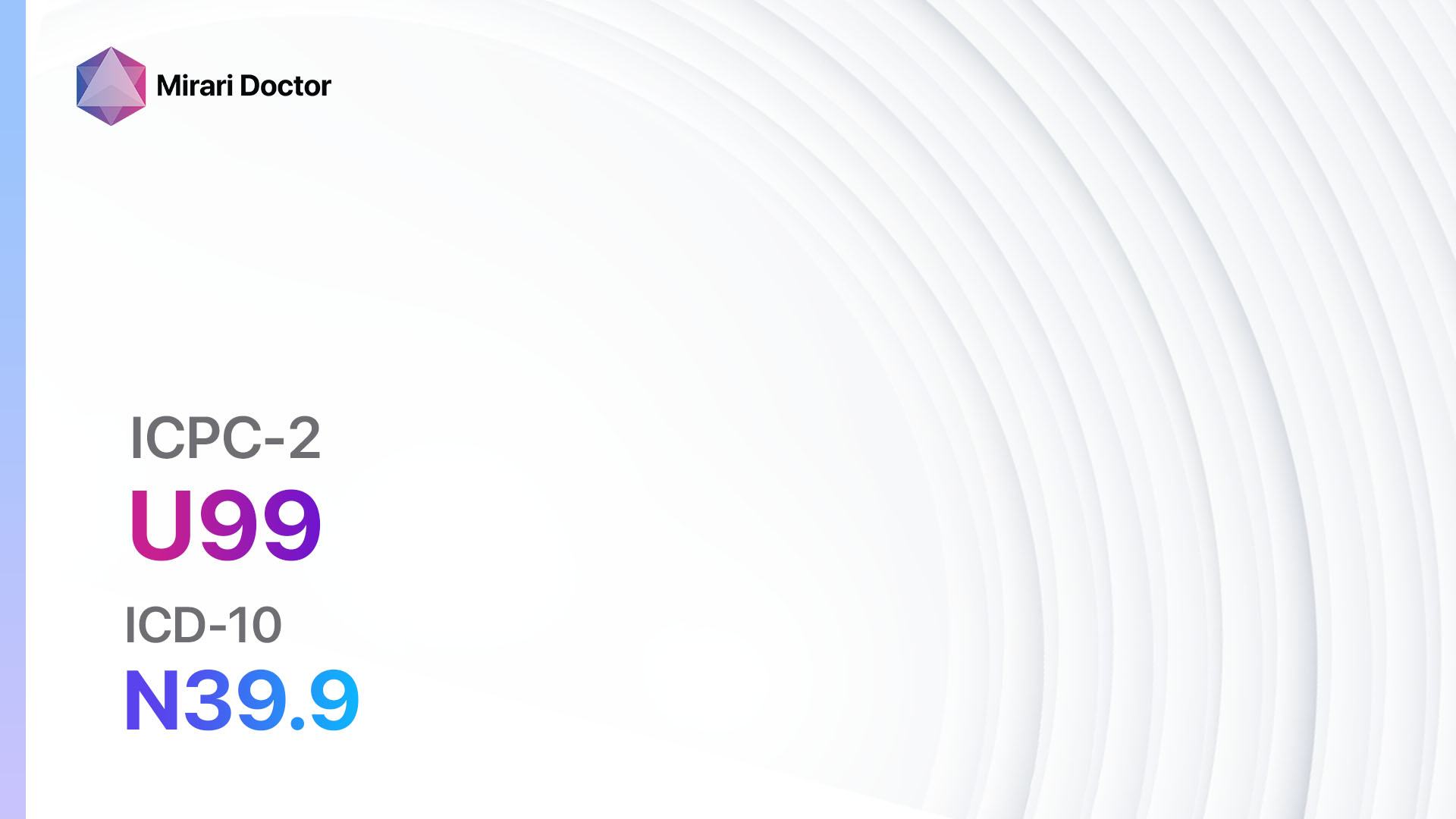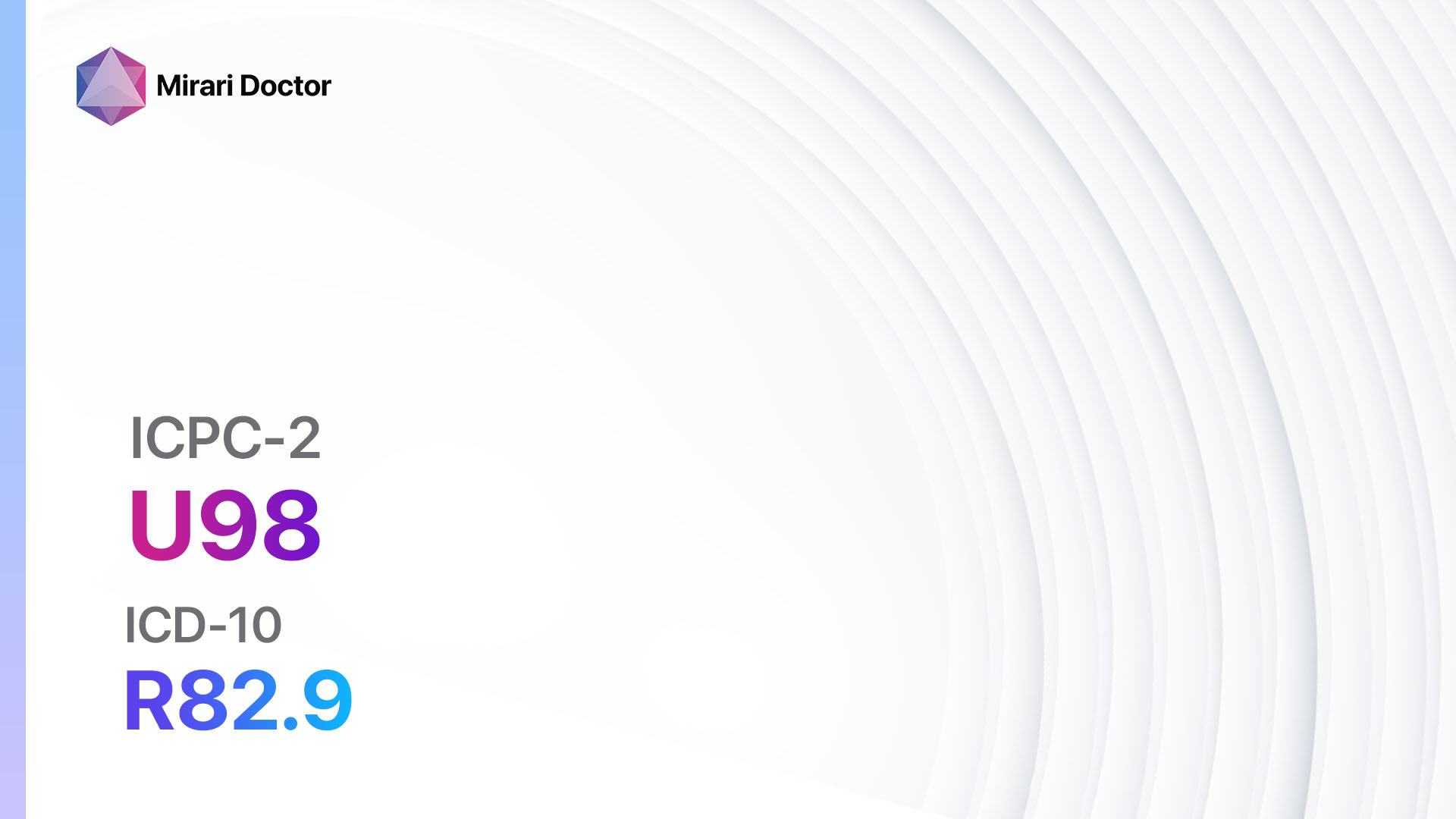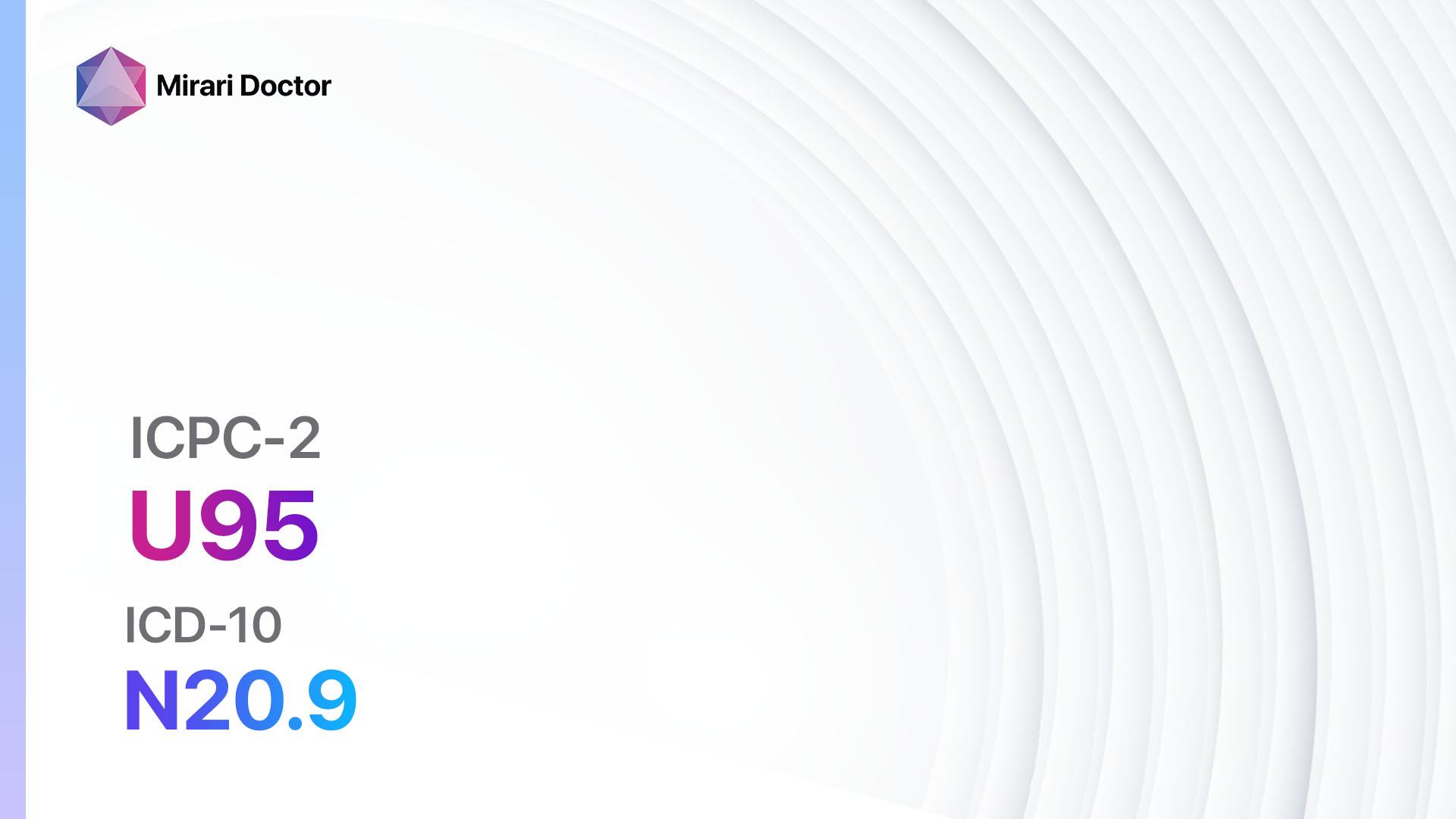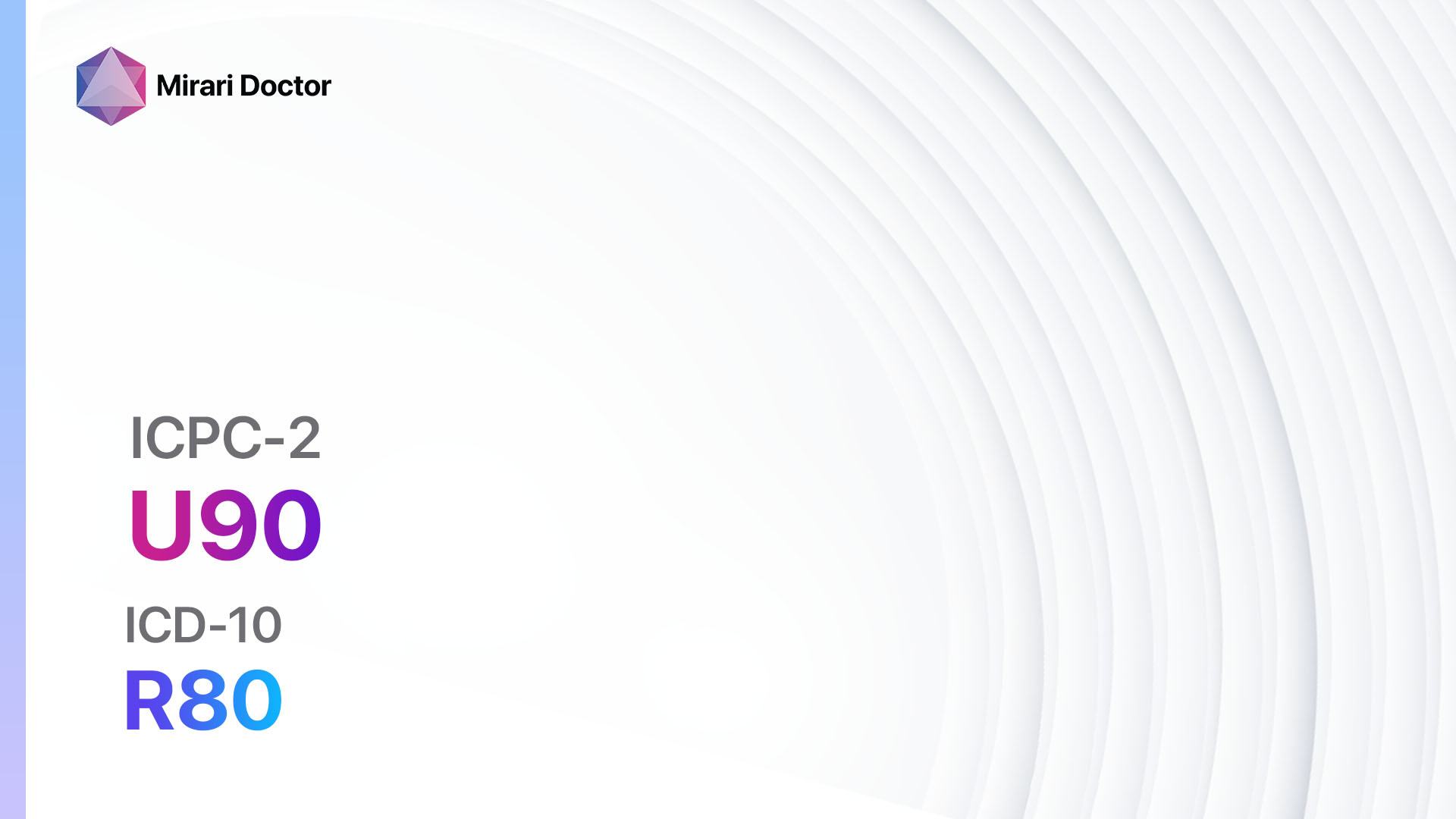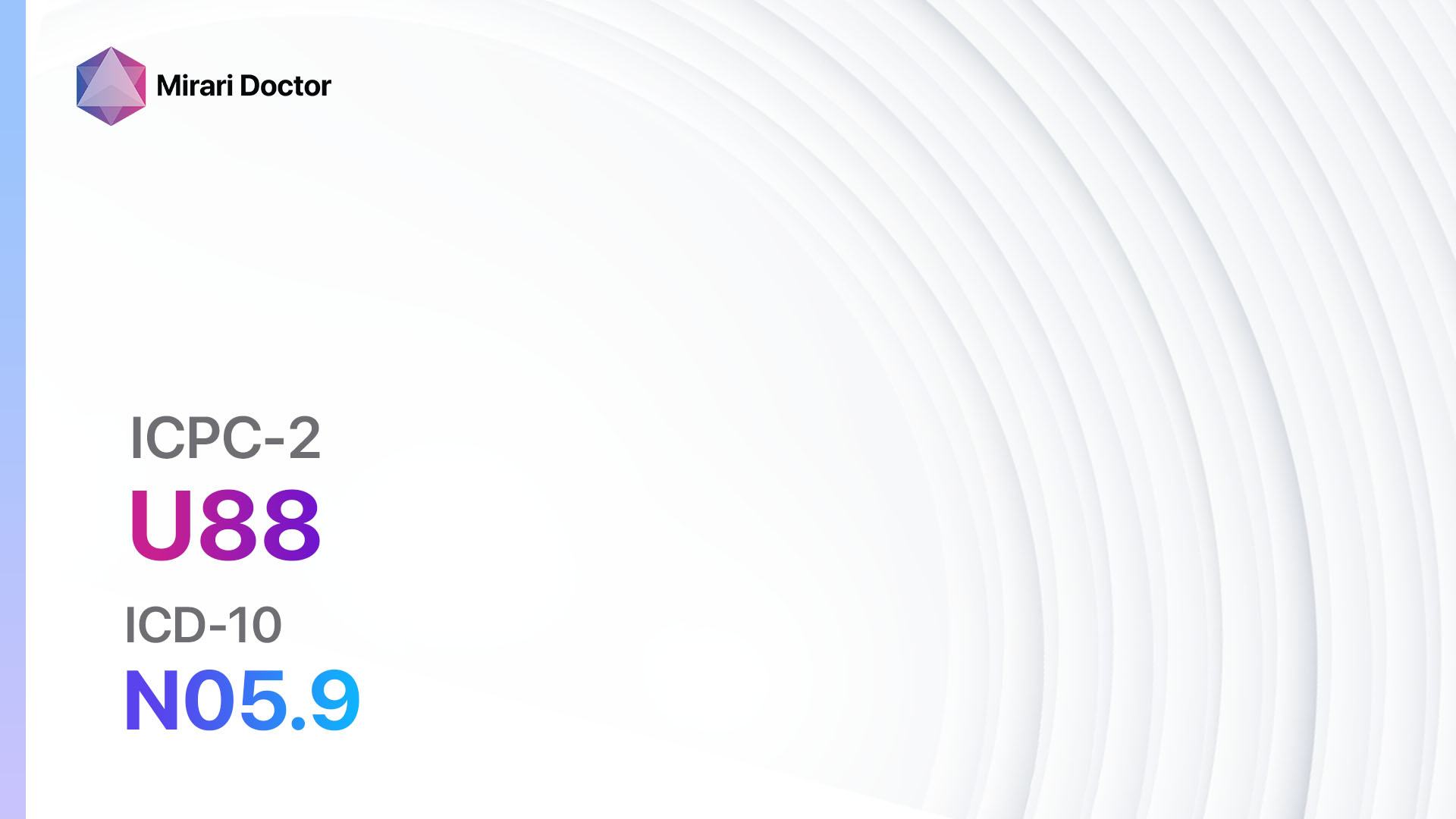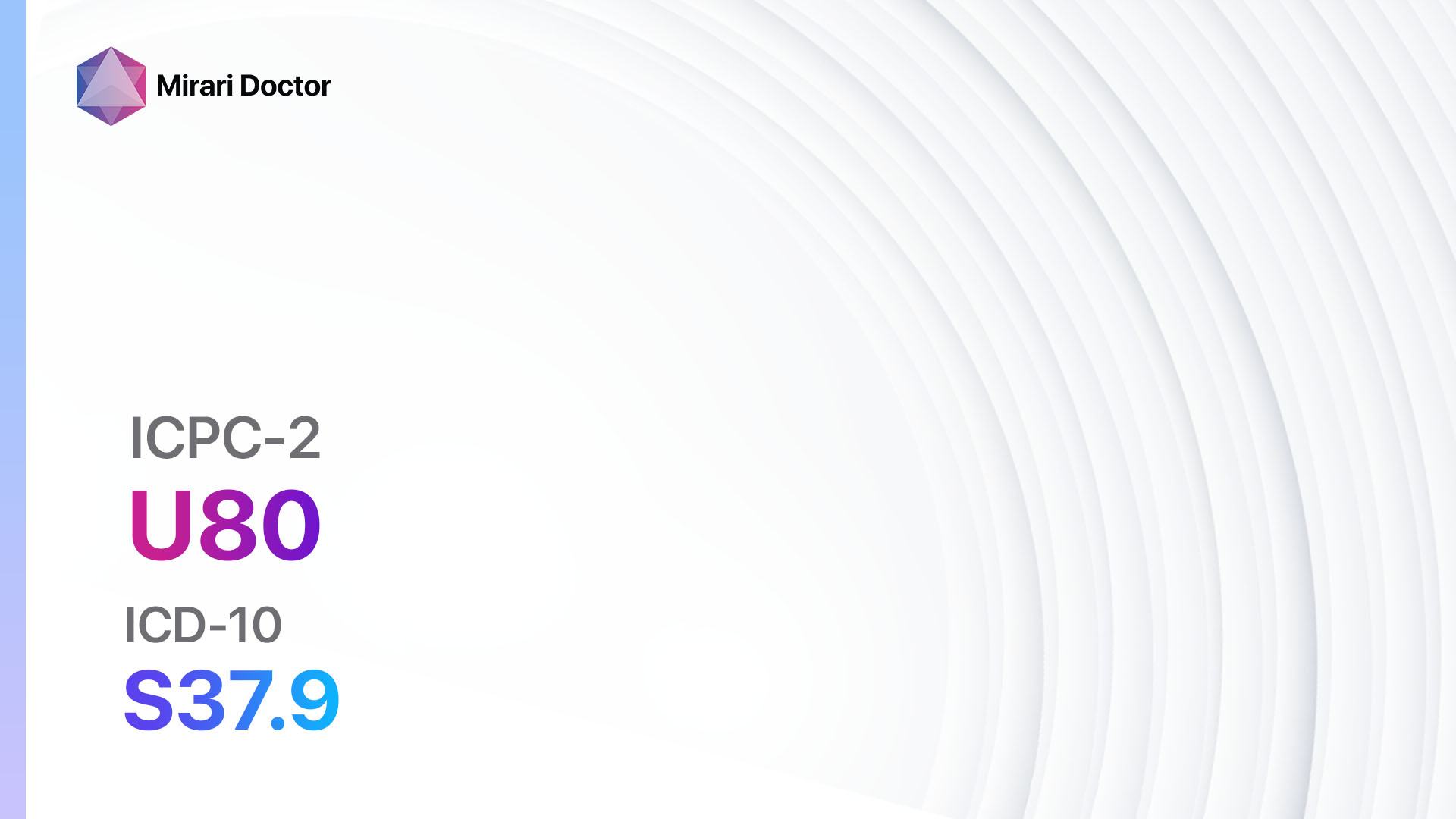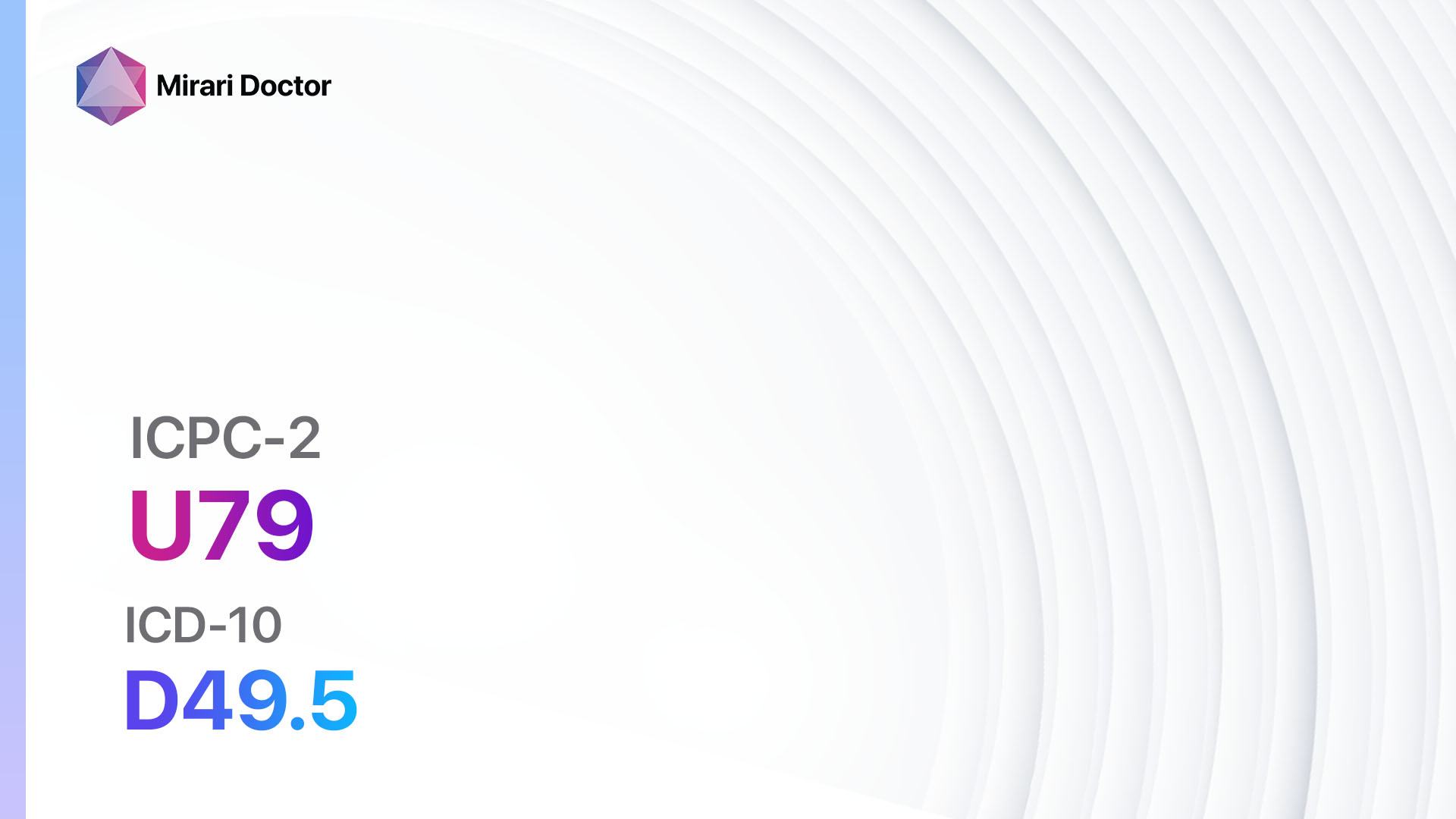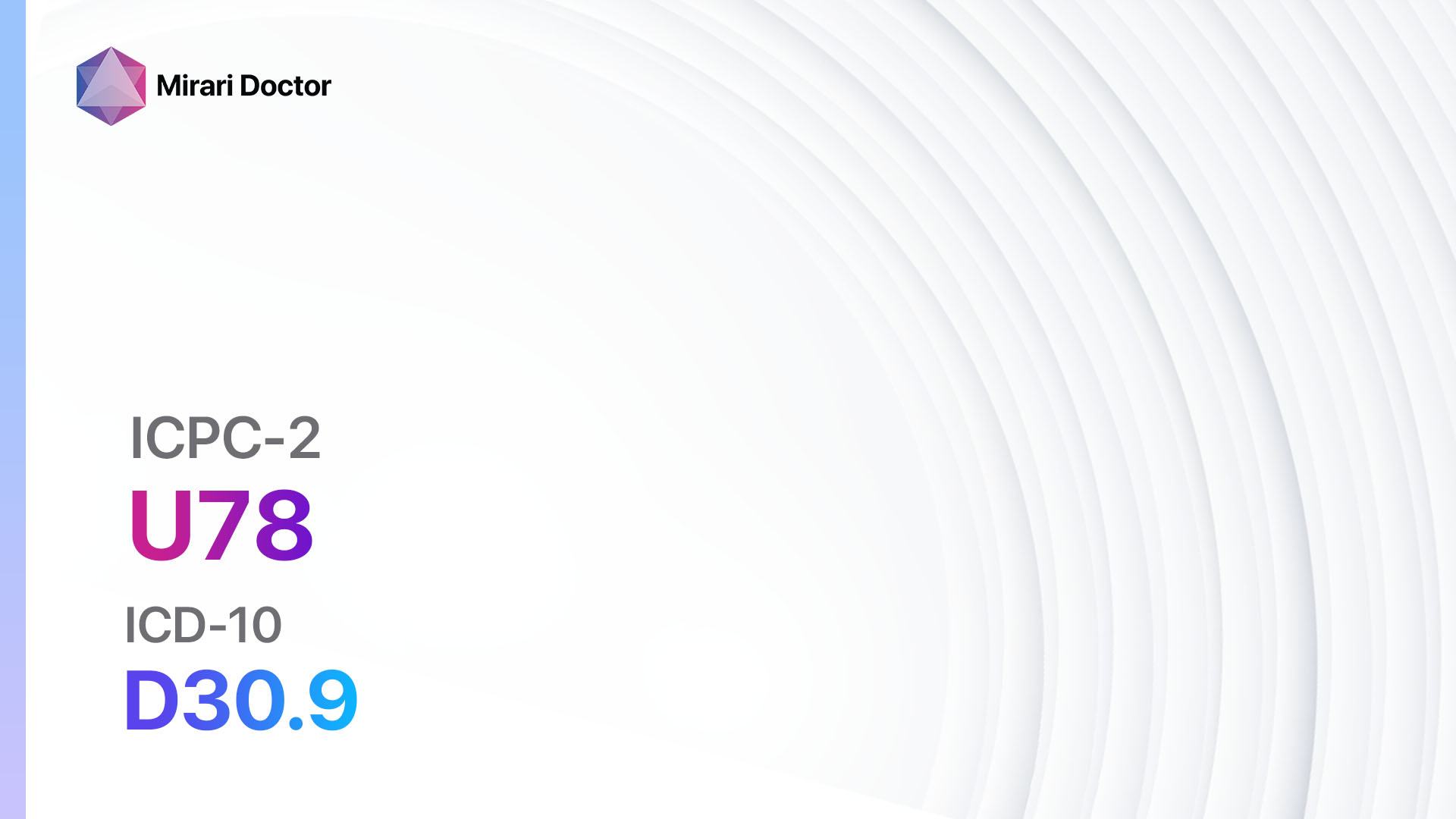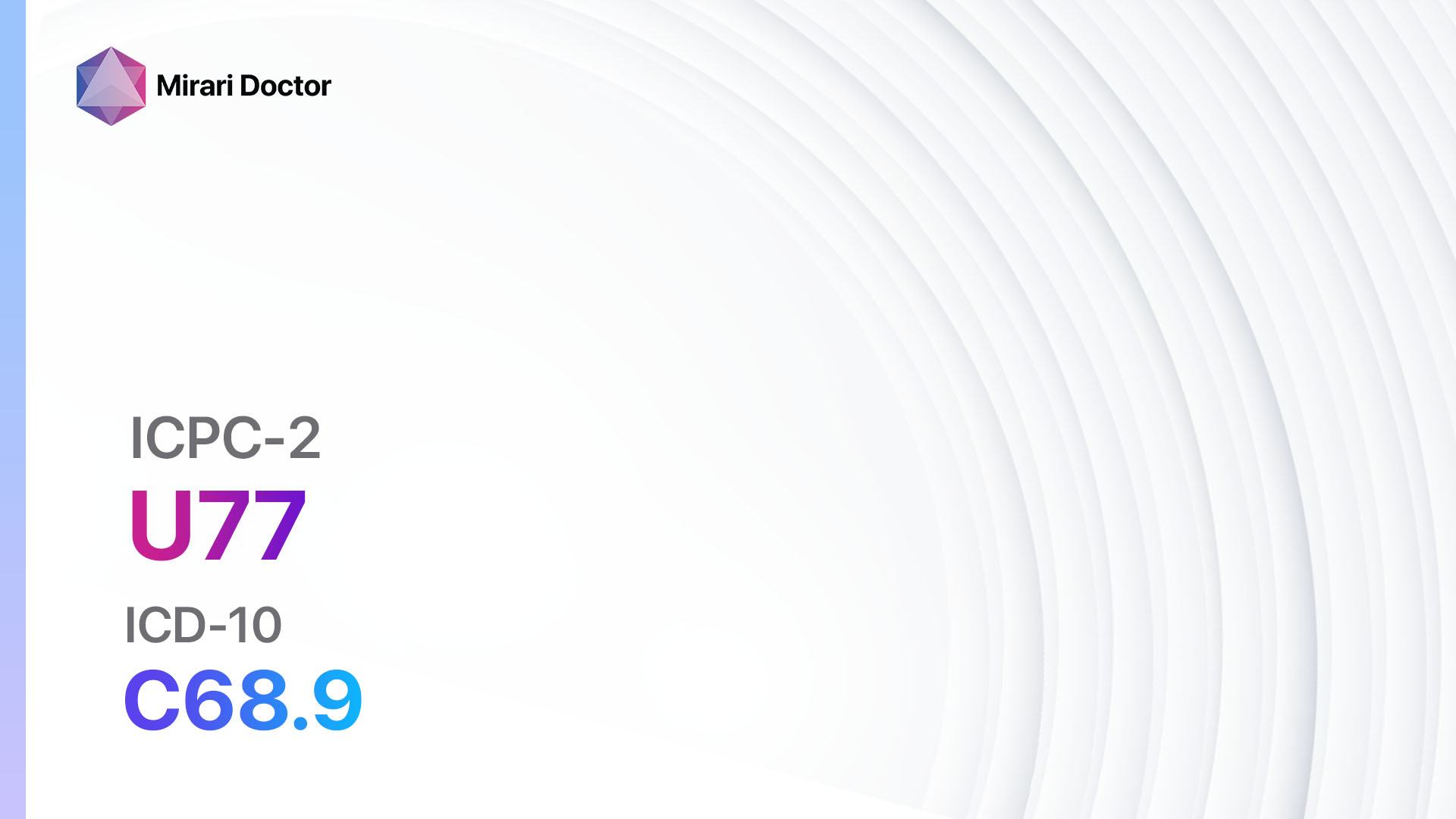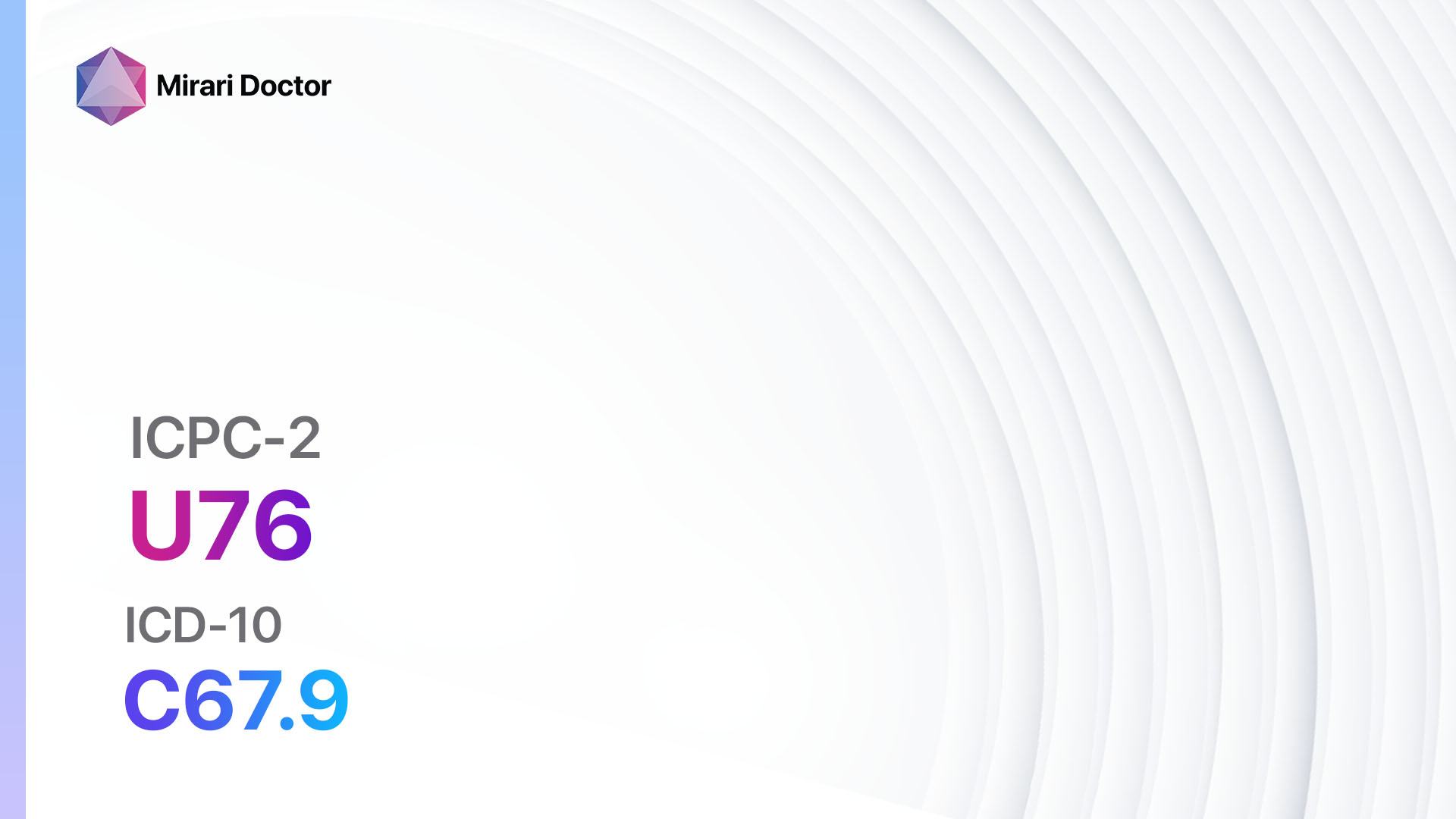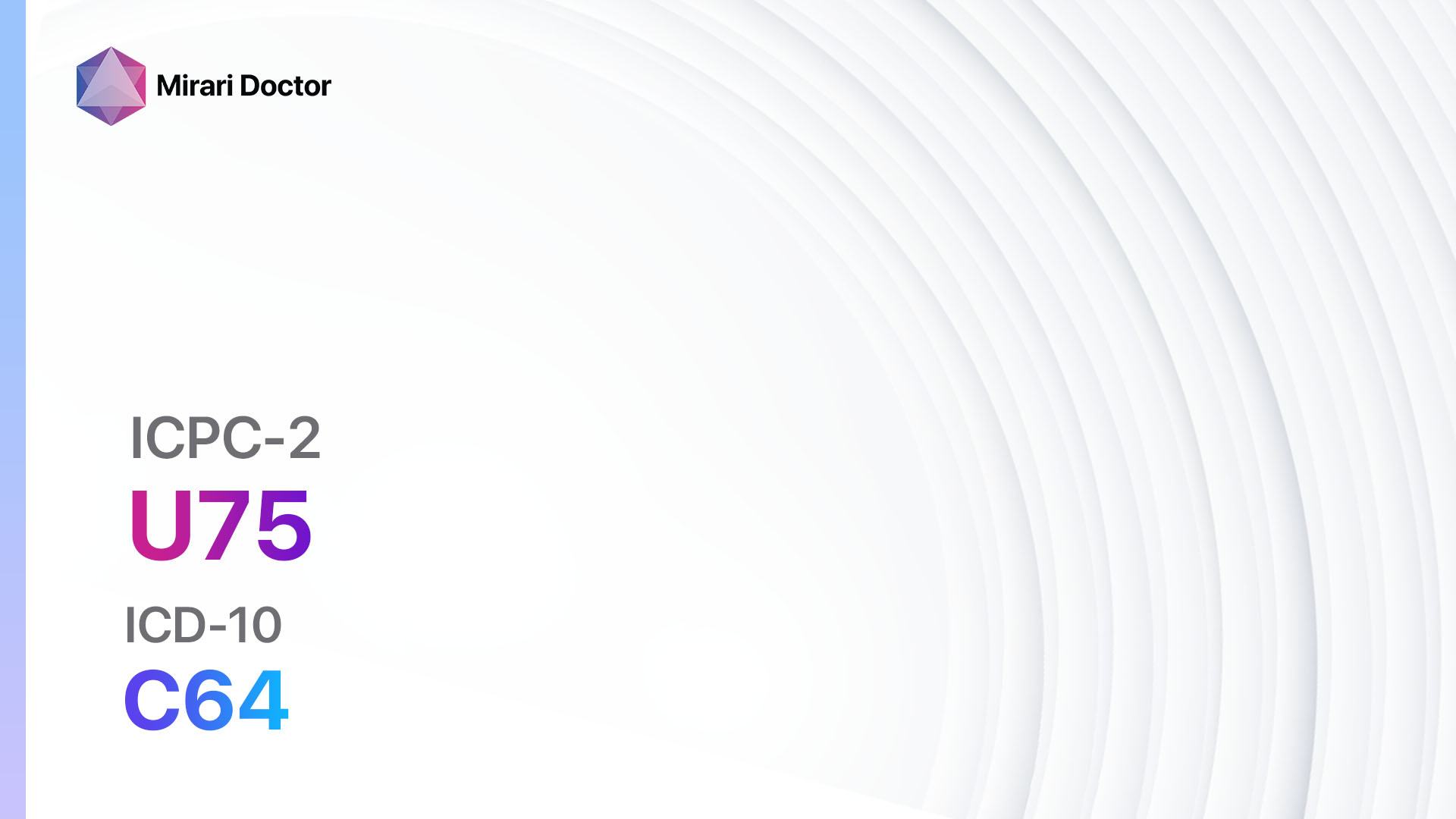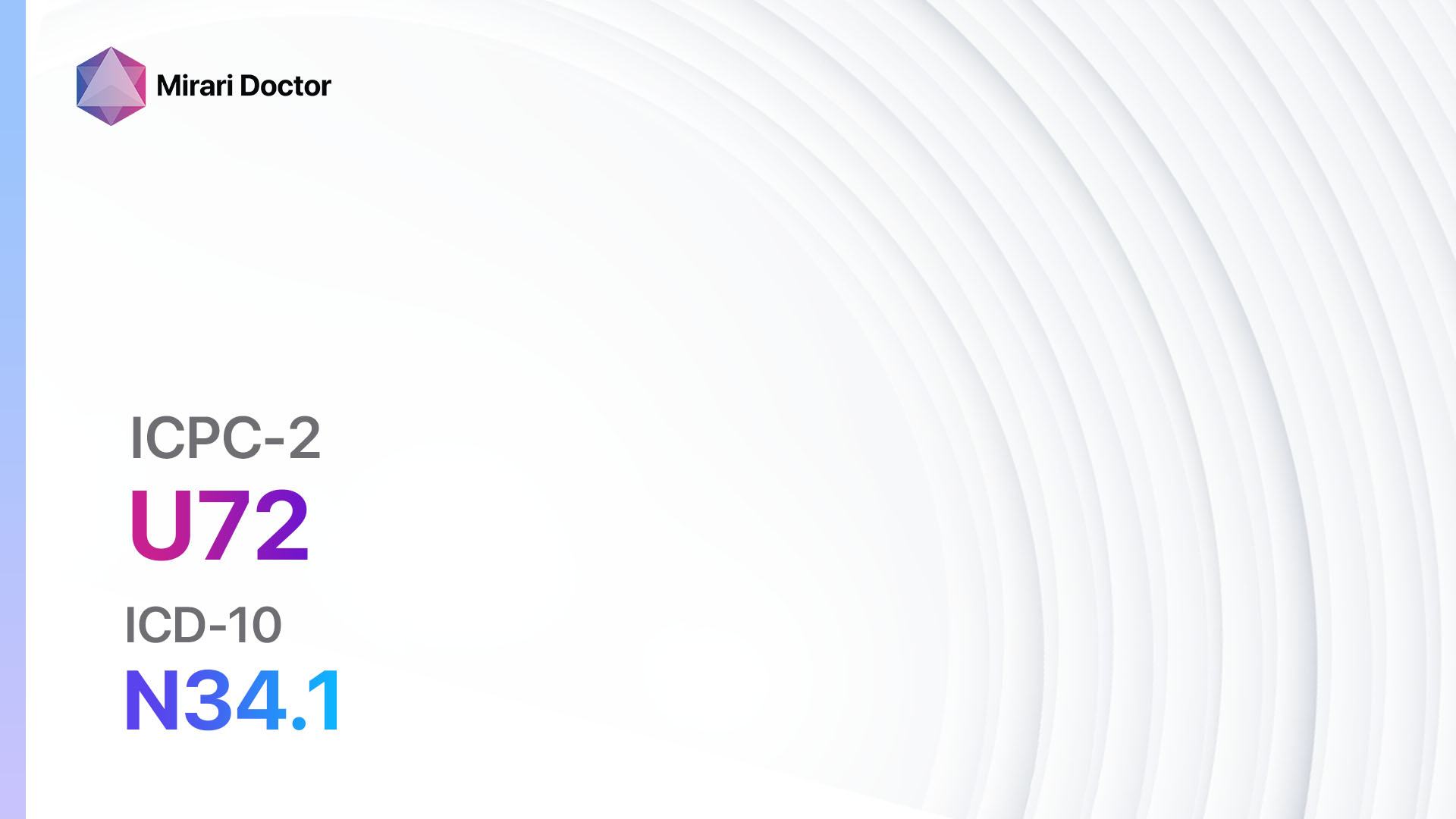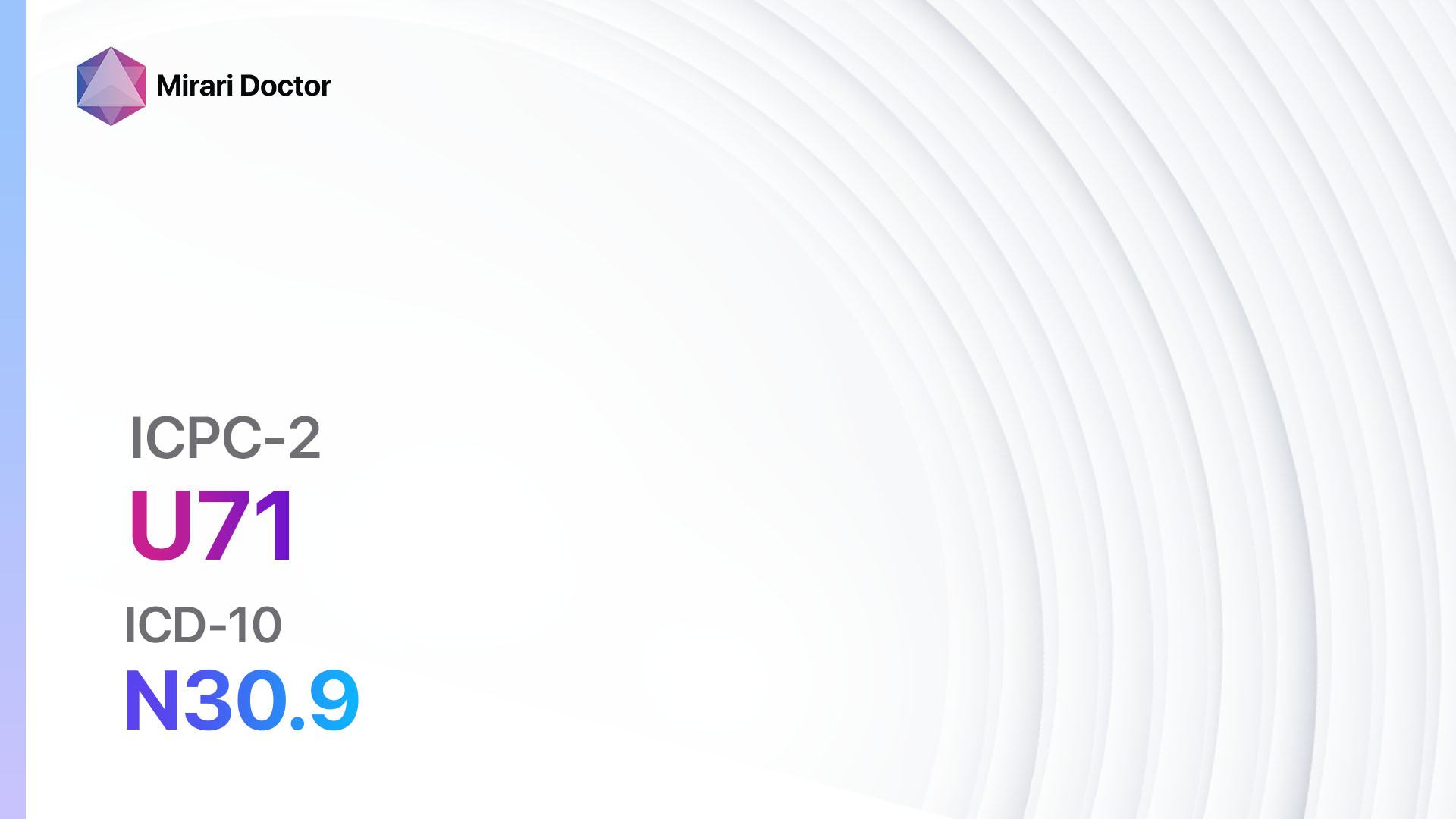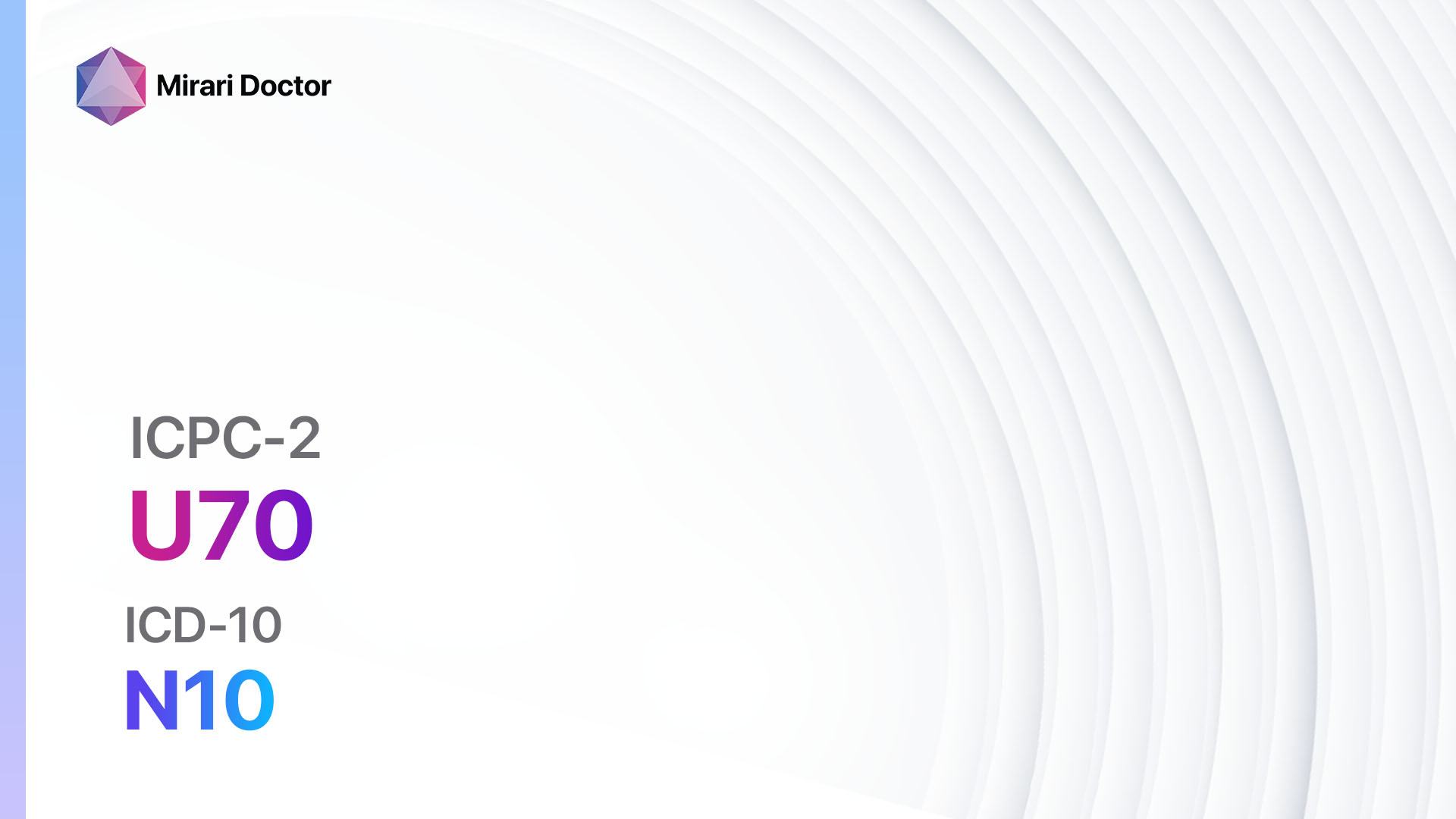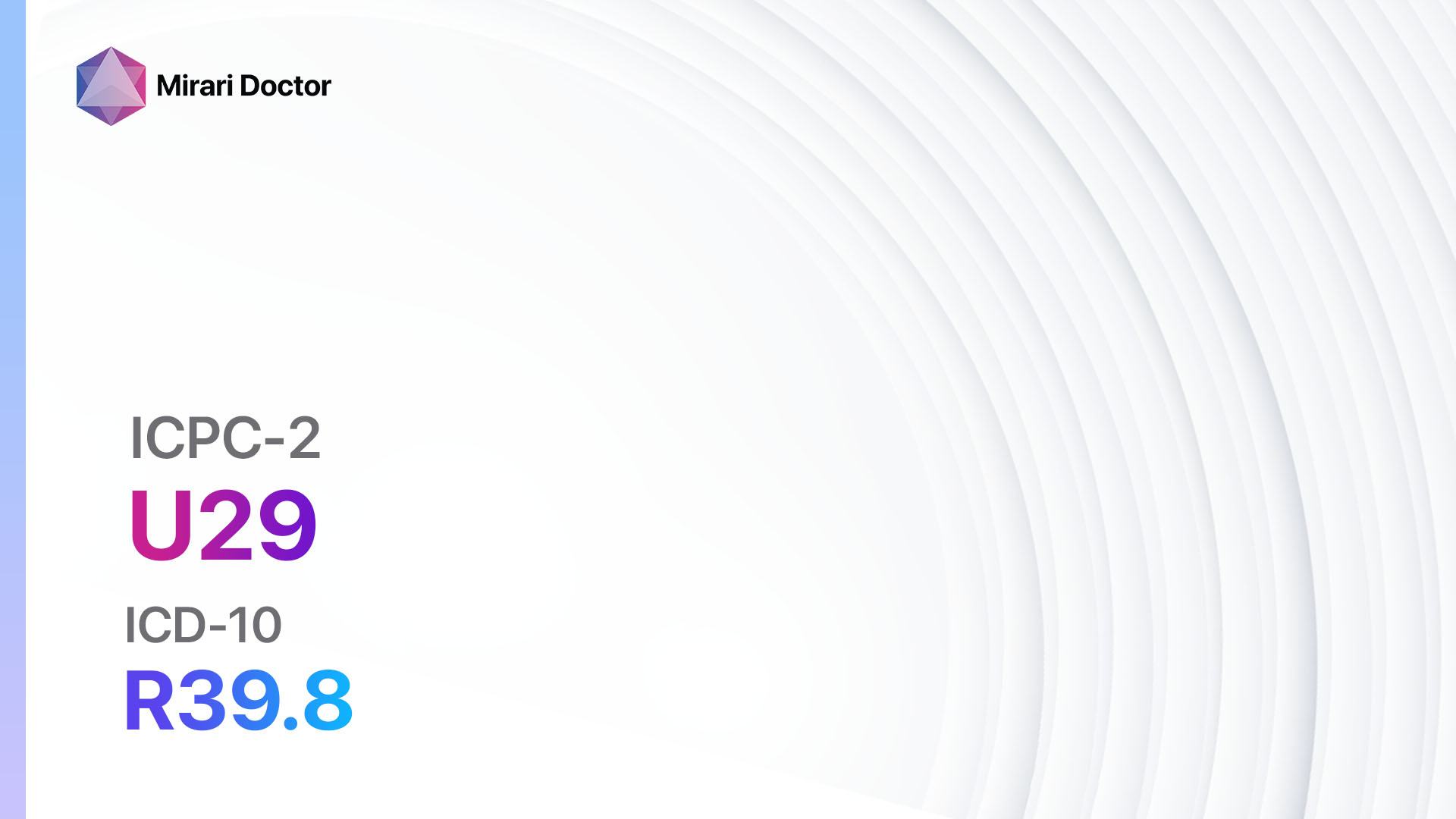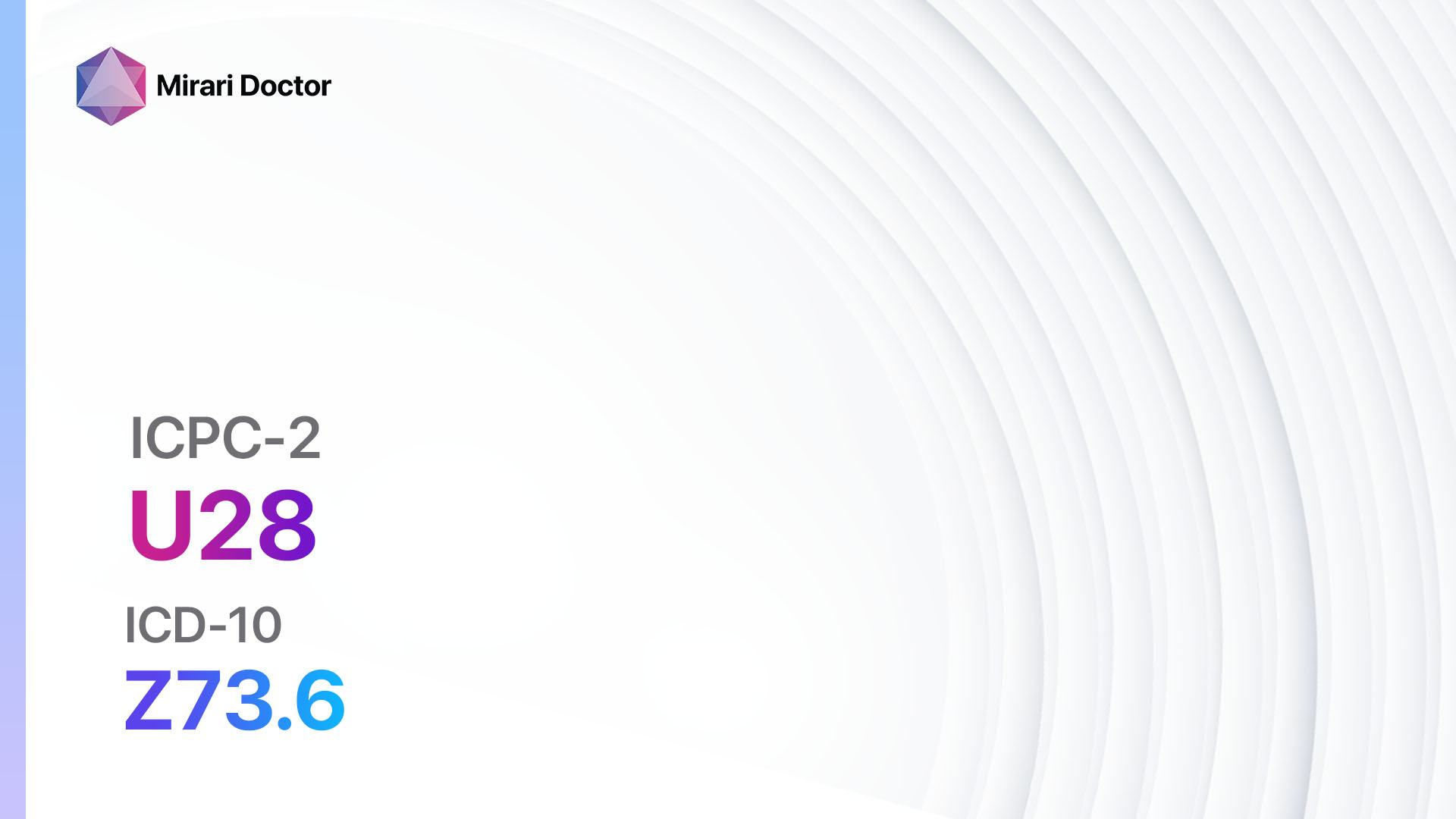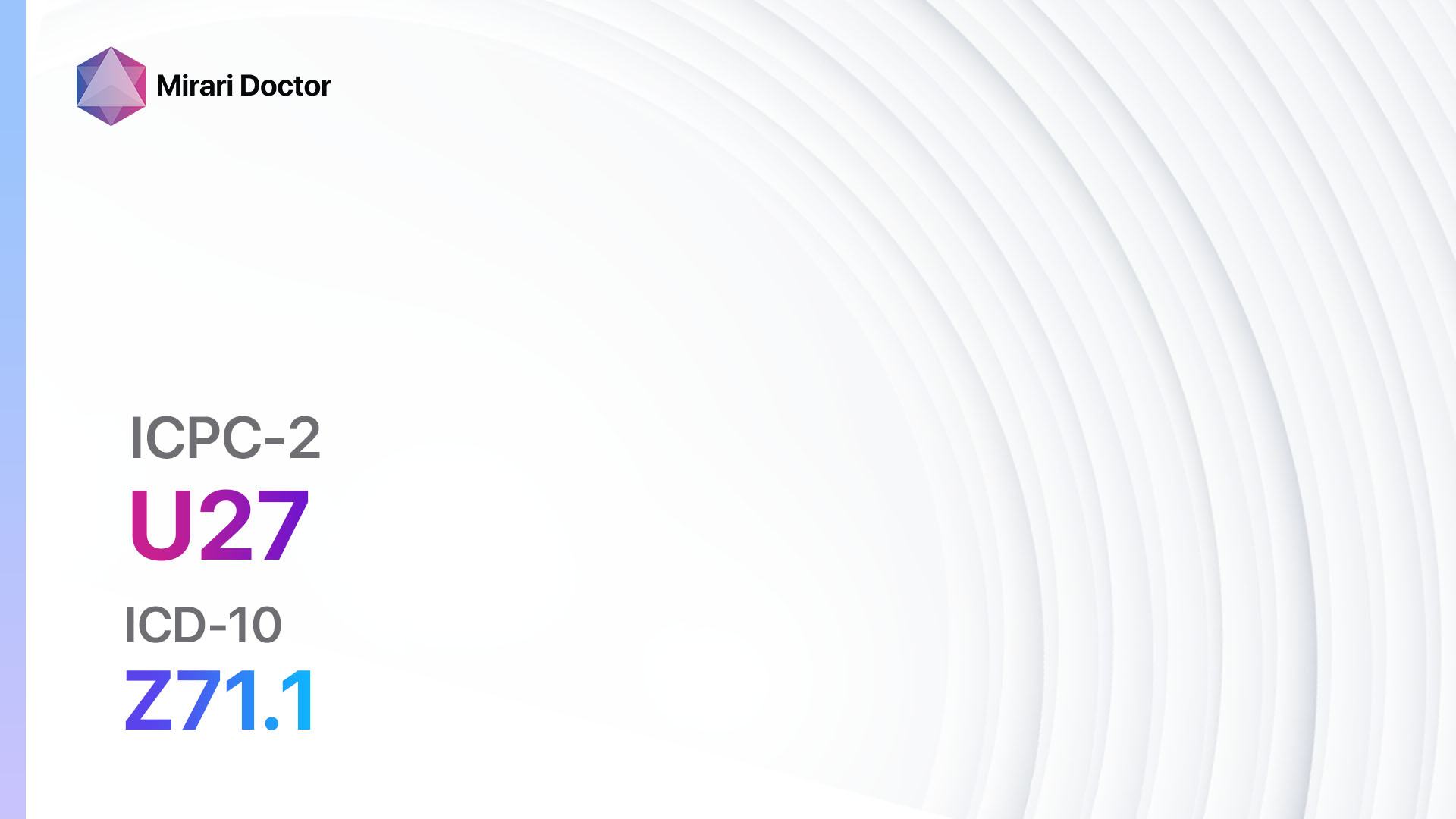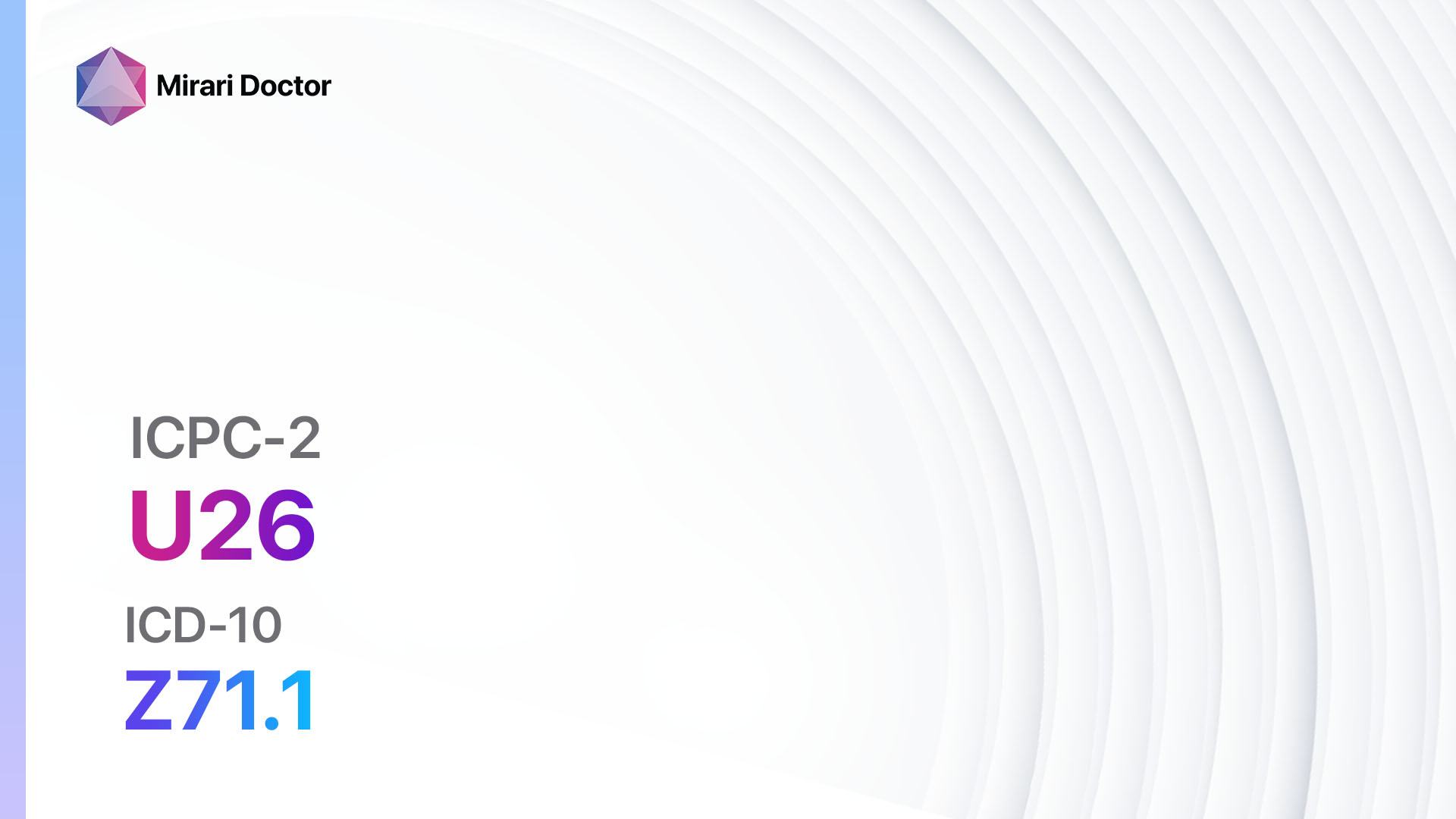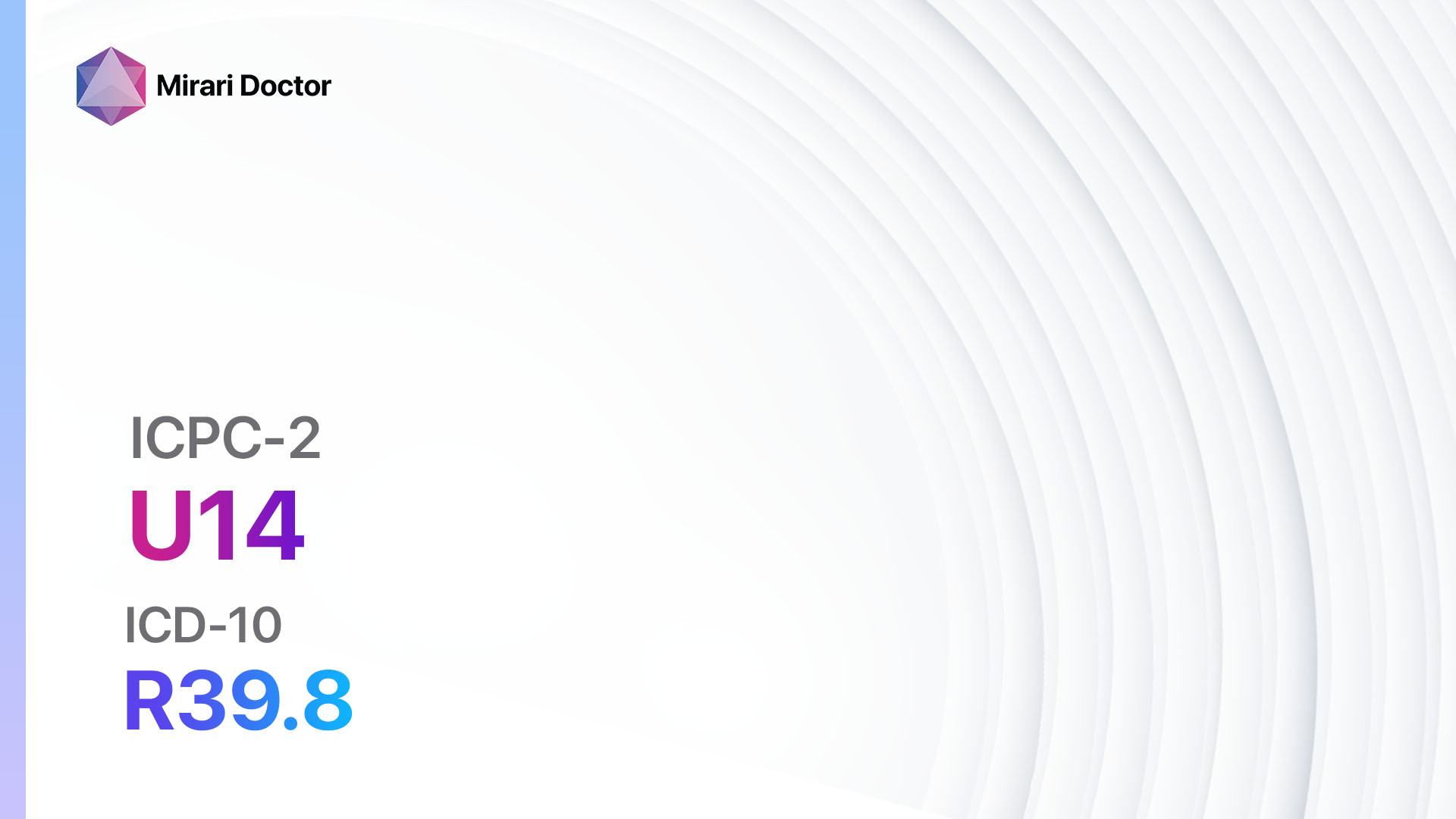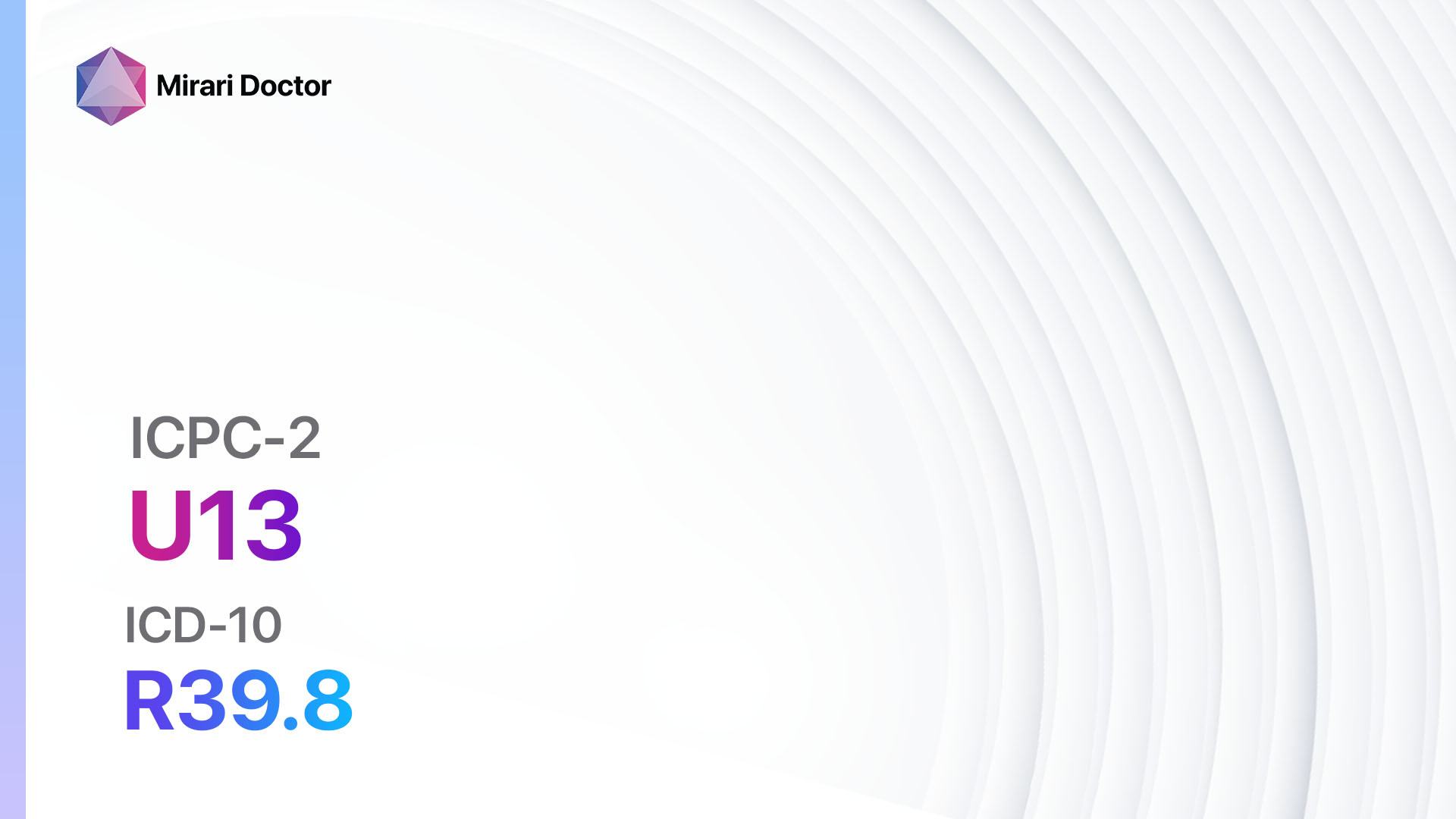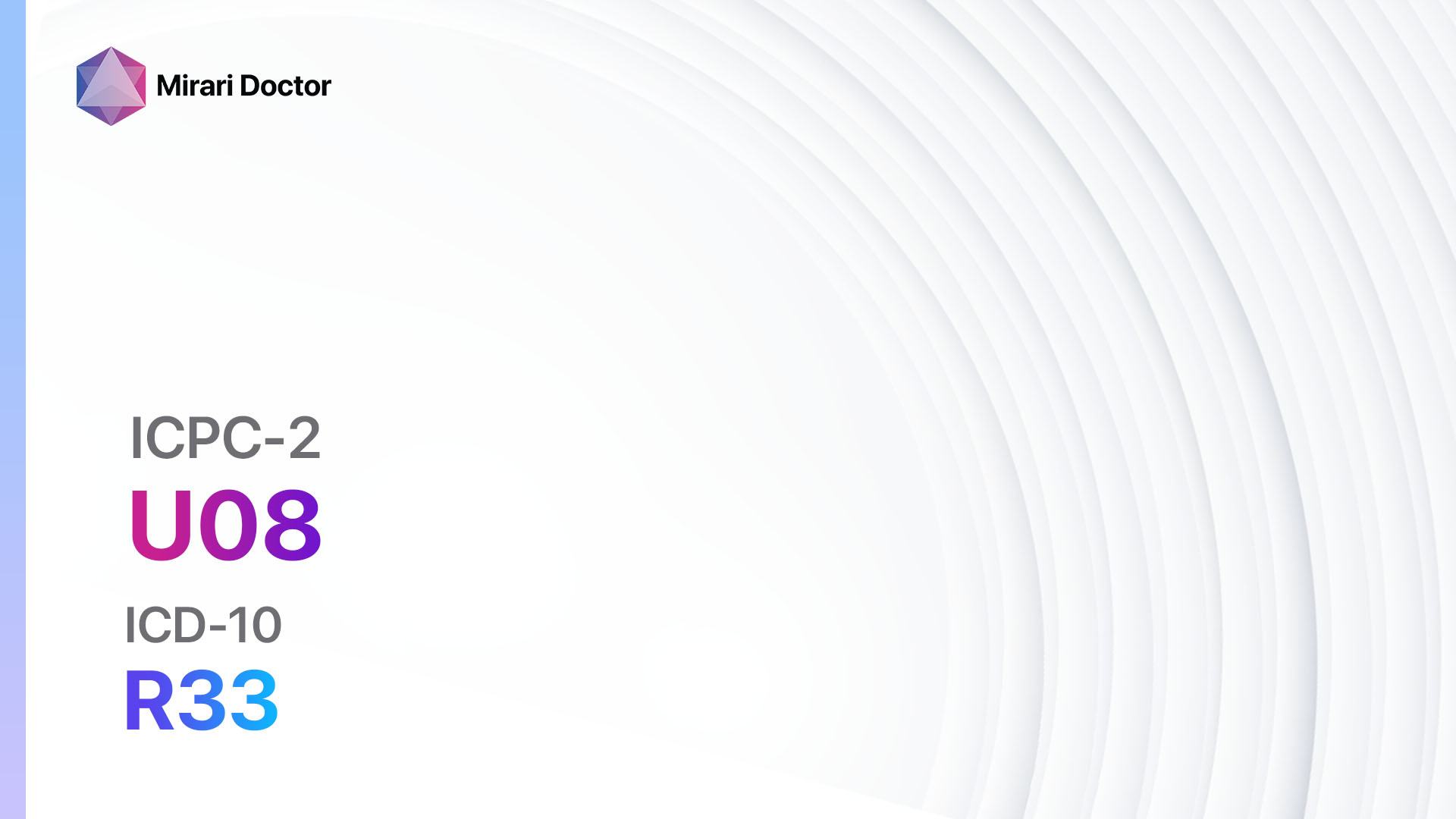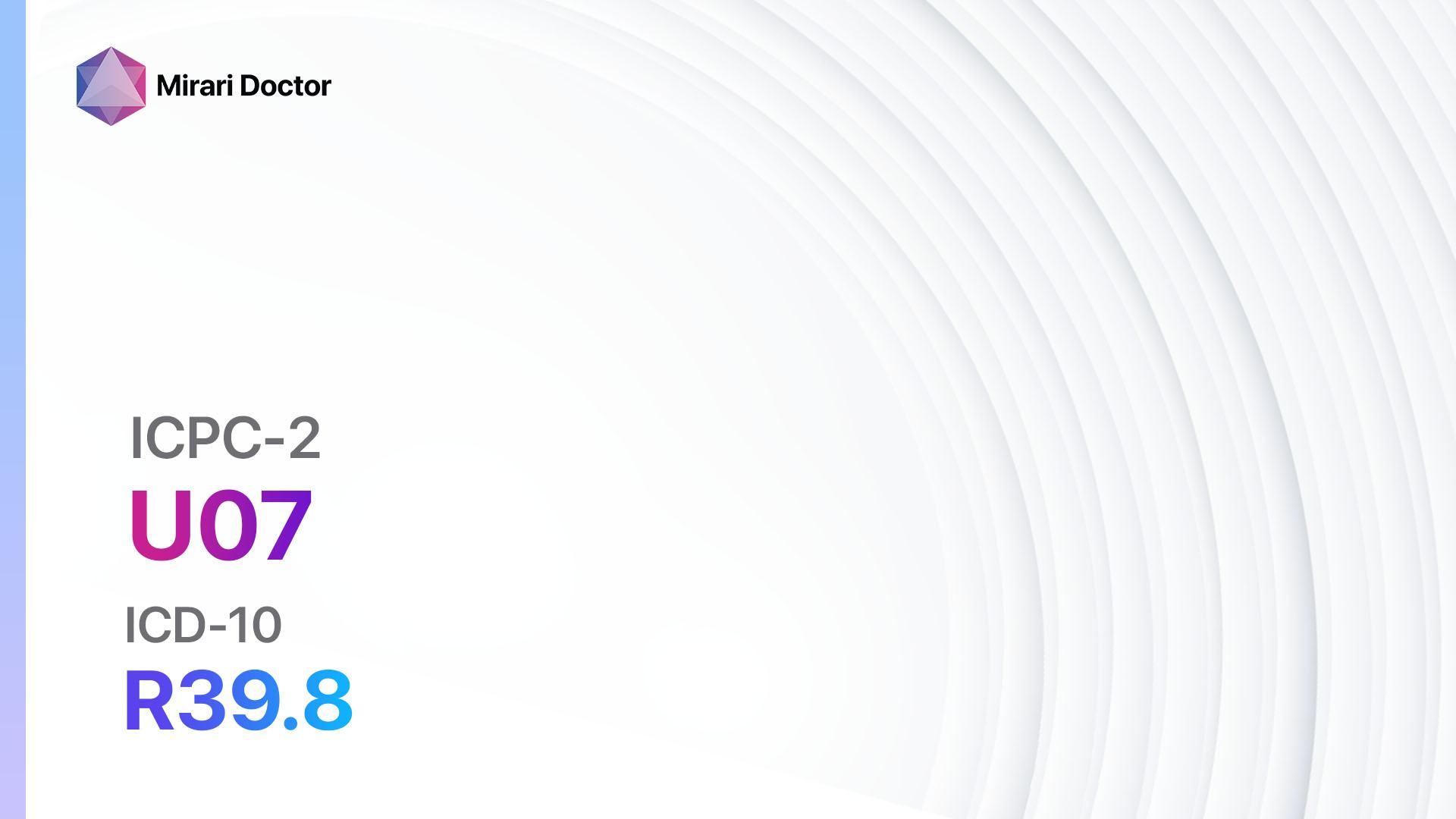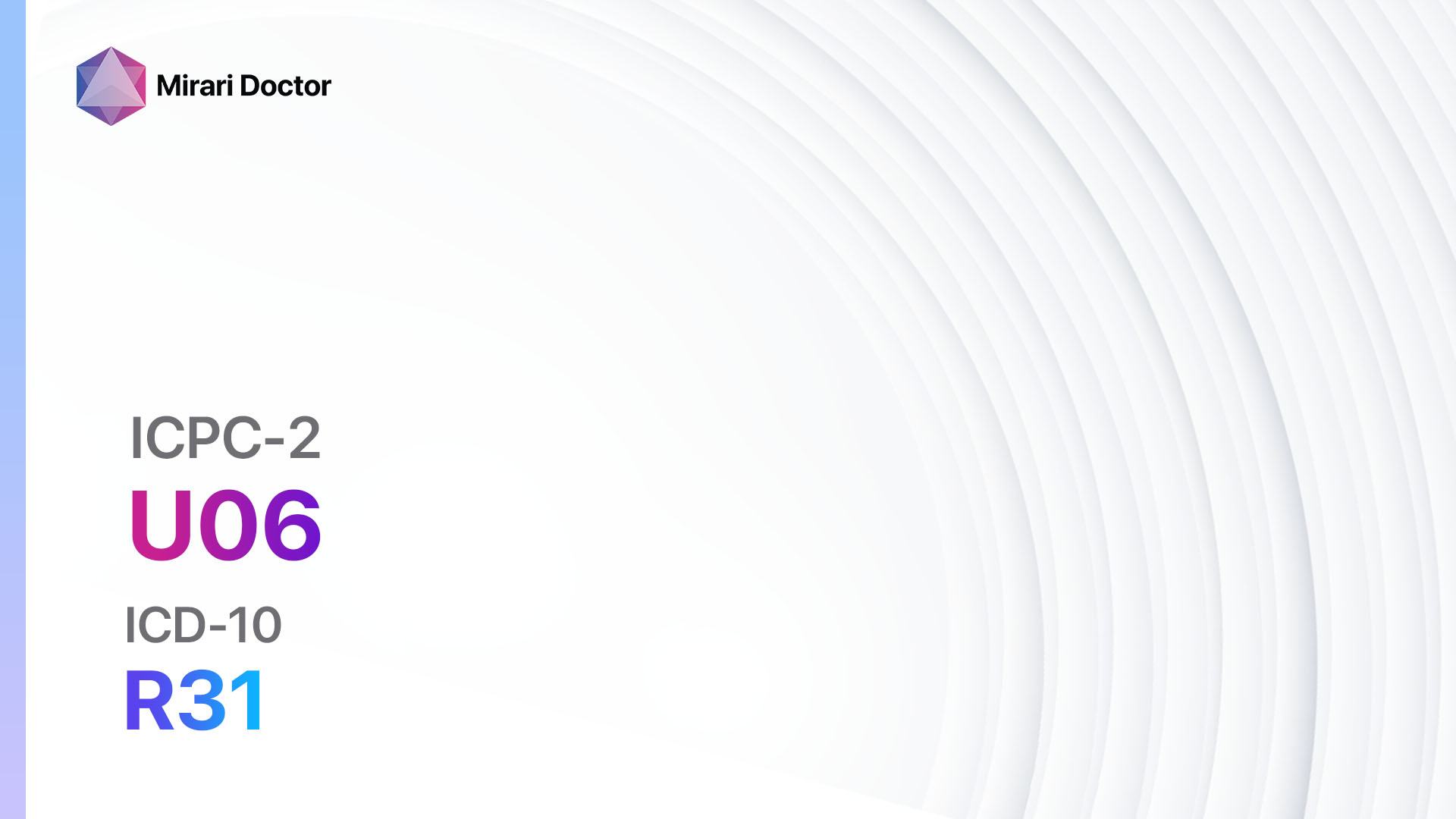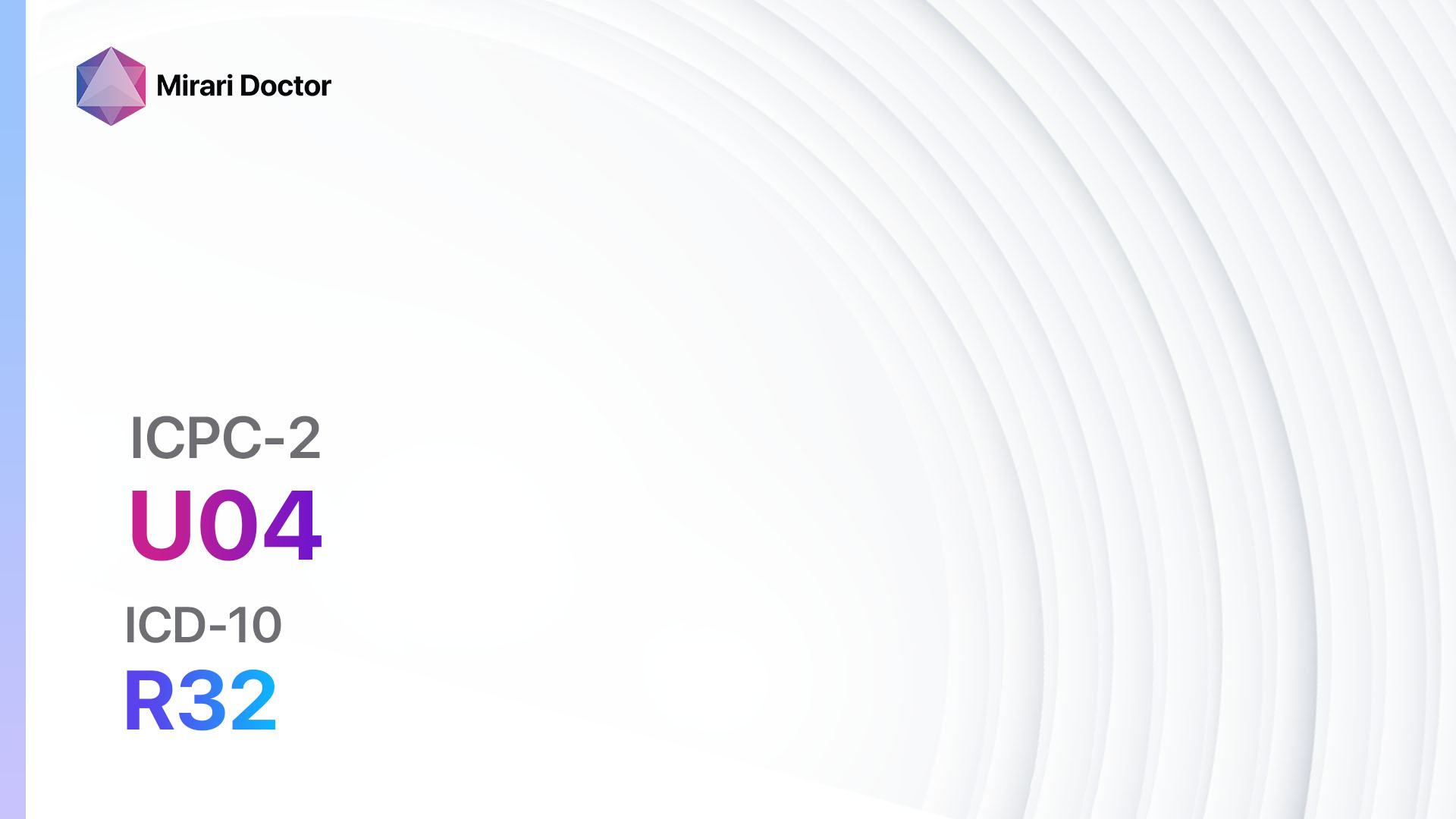
Introduction
Incontinence urine refers to the involuntary leakage of urine, which can significantly impact a person’s quality of life. It is a common condition that affects people of all ages, but it is more prevalent in older adults[1]. This guide aims to provide healthcare professionals with a comprehensive overview of the diagnostic steps and possible interventions for incontinence urine.
Codes
Symptoms
- Urinary urgency: A sudden and intense need to urinate.
- Urinary frequency: The need to urinate more often than usual.
- Nocturia: Waking up at night to urinate.
- Urinary leakage: Involuntary leakage of urine, ranging from a few drops to a complete emptying of the bladder.
- Urinary hesitancy: Difficulty initiating urination[4].
Causes
- Weak pelvic floor muscles: Weakening of the muscles that support the bladder and urethra.
- Overactive bladder muscles: Involuntary contractions of the bladder muscles.
- Nerve damage: Damage to the nerves that control bladder function.
- Urinary tract infections: Infections in the urinary tract can cause temporary incontinence.
- Medications: Certain medications can increase urine production or relax the bladder muscles, leading to incontinence.
- Chronic conditions: Conditions such as diabetes, Parkinson’s disease, and multiple sclerosis can contribute to incontinence[5].
Diagnostic Steps
Medical History
- Gather information about the patient’s symptoms, including the frequency and severity of urinary leakage.
- Identify any risk factors, such as age, gender, and medical conditions.
- Assess the impact of incontinence on the patient’s daily activities and quality of life.
- Inquire about any previous treatments or interventions for incontinence[6].
Physical Examination
- Perform a thorough physical examination, including a pelvic examination in women.
- Assess the strength and tone of the pelvic floor muscles.
- Check for any signs of infection or abnormalities in the urinary tract.
- Evaluate the neurological function related to bladder control[7].
Laboratory Tests
- Urinalysis: To check for signs of infection or other abnormalities in the urine.
- Urine culture: If a urinary tract infection is suspected.
- Blood tests: To assess kidney function and rule out any underlying medical conditions[8].
Diagnostic Imaging
- Ultrasound: To evaluate the structure and function of the bladder and kidneys.
- Cystoscopy: A thin tube with a camera is inserted into the urethra and bladder to visualize any abnormalities[9].
Other Tests
- Urodynamic testing: Measures the pressure and flow of urine during bladder filling and emptying.
- Pad test: Measures the amount of urine leakage using absorbent pads worn by the patient.
- Bladder diary: The patient records their fluid intake, urinary frequency, and episodes of leakage over a certain period[10].
Follow-up and Patient Education
- Schedule follow-up appointments to monitor the effectiveness of interventions and adjust the treatment plan if necessary.
- Provide education on pelvic floor exercises, bladder training techniques, and lifestyle modifications to manage incontinence.
- Offer emotional support and counseling to address any psychological or social impacts of incontinence.
Possible Interventions
Traditional Interventions
Medications:
Top 5 drugs for Incontinence urine:
- Anticholinergic medications (e.g., Oxybutynin, Tolterodine):
- Cost: Generic versions can be $10-$50/month.
- Contraindications: Glaucoma, urinary retention, gastrointestinal obstruction.
- Side effects: Dry mouth, constipation, blurred vision.
- Severe side effects: Confusion, hallucinations, urinary retention.
- Drug interactions: Other anticholinergic medications, certain antidepressants.
- Warning: Use with caution in elderly patients due to increased risk of cognitive impairment.
- Mirabegron:
- Cost: $100-$200/month.
- Contraindications: Severe uncontrolled hypertension, severe liver impairment.
- Side effects: Increased blood pressure, headache, urinary tract infection.
- Severe side effects: Angioedema, severe allergic reactions.
- Drug interactions: CYP3A4 inhibitors, beta-blockers.
- Warning: Monitor blood pressure regularly during treatment.
- Alpha-blockers (e.g., Tamsulosin, Alfuzosin):
- Cost: Generic versions can be $10-$50/month.
- Contraindications: Hypotension, severe liver impairment.
- Side effects: Dizziness, low blood pressure, retrograde ejaculation.
- Severe side effects: Priapism, angioedema.
- Drug interactions: Other alpha-blockers, PDE5 inhibitors.
- Warning: Use with caution in patients with cardiovascular disease.
- Estrogen (for postmenopausal women):
- Cost: $20-$50/month.
- Contraindications: History of breast cancer, blood clots, liver disease.
- Side effects: Breast tenderness, vaginal bleeding, nausea.
- Severe side effects: Increased risk of breast cancer, stroke, blood clots.
- Drug interactions: Certain anticonvulsants, St. John’s wort.
- Warning: Use the lowest effective dose for the shortest duration.
- Imipramine:
- Cost: $10-$50/month.
- Contraindications: Recent myocardial infarction, glaucoma, urinary retention.
- Side effects: Dry mouth, constipation, drowsiness.
- Severe side effects: Cardiac arrhythmias, seizures.
- Drug interactions: MAO inhibitors, other tricyclic antidepressants.
- Warning: Use with caution in patients with cardiovascular disease or seizure disorders.
Alternative Drugs:
- Botulinum toxin injections: Injected into the bladder muscle to relax overactive muscles. Cost: $1,000-$2,000 per treatment.
- Neuromodulation: Electrical stimulation of the nerves that control bladder function. Cost: $10,000-$20,000 for the device implantation.
- Surgical procedures: Invasive procedures such as sling surgery or artificial urinary sphincter placement. Cost: $10,000-$20,000.
Alternative Interventions
- Pelvic floor exercises: Strengthening the pelvic floor muscles through exercises such as Kegels. Cost: Free.
- Bladder training: Gradually increasing the time between bathroom visits to improve bladder control. Cost: Free.
- Biofeedback: Using sensors to provide feedback on muscle activity during pelvic floor exercises. Cost: $50-$100 per session.
- Acupuncture: May help improve bladder control and reduce incontinence episodes. Cost: $60-$120 per session.
- Weight loss: Losing excess weight can reduce pressure on the bladder and improve symptoms. Cost: Varies depending on the weight loss program.
- Dietary modifications: Avoiding bladder irritants such as caffeine, alcohol, and spicy foods. Cost: Varies depending on dietary choices.
Lifestyle Interventions
- Fluid management: Adjusting fluid intake to avoid excessive urine production. Cost: Free.
- Scheduled toileting: Establishing a regular bathroom schedule to prevent accidents. Cost: Free.
- Absorbent products: Using pads, adult diapers, or other absorbent products to manage leakage. Cost: Varies depending on the product.
- Bladder retraining: Gradually increasing the time between bathroom visits to improve bladder control. Cost: Free.
- Avoiding constipation: Maintaining regular bowel movements to prevent pressure on the bladder. Cost: Varies depending on dietary choices and over-the-counter laxatives.
It is important to note that the cost ranges provided are approximate and may vary depending on the location and availability of the interventions.
Mirari Cold Plasma Alternative Intervention
Understanding Mirari Cold Plasma
- Safe and Non-Invasive Treatment: Mirari Cold Plasma is a safe and non-invasive treatment option for various skin conditions. It does not require incisions, minimizing the risk of scarring, bleeding, or tissue damage.
- Efficient Extraction of Foreign Bodies: Mirari Cold Plasma facilitates the removal of foreign bodies from the skin by degrading and dissociating organic matter, allowing easier access and extraction.
- Pain Reduction and Comfort: Mirari Cold Plasma has a local analgesic effect, providing pain relief during the treatment, making it more comfortable for the patient.
- Reduced Risk of Infection: Mirari Cold Plasma has antimicrobial properties, effectively killing bacteria and reducing the risk of infection.
- Accelerated Healing and Minimal Scarring: Mirari Cold Plasma stimulates wound healing and tissue regeneration, reducing healing time and minimizing the formation of scars.
Mirari Cold Plasma Prescription
Video instructions for using Mirari Cold Plasma Device – U04 Incontinence urine (ICD-10:R32)
| Mild | Moderate | Severe |
| Mode setting: 1 (Infection) Location: 2 (Prostate & Uterus) Morning: 15 minutes, Evening: 15 minutes |
Mode setting: 1 (Infection) Location: 2 (Prostate & Uterus) Morning: 30 minutes, Lunch: 30 minutes, Evening: 30 minutes |
Mode setting: 1 (Infection) Location: 2 (Prostate & Uterus) Morning: 30 minutes, Lunch: 30 minutes, Evening: 30 minutes |
| Mode setting: 6 (Liver/Kidney Therapy) Location: 2 (Prostate & Uterus) Morning: 15 minutes, Evening: 15 minutes |
Mode setting: 6 (Liver/Kidney Therapy) Location: 2 (Prostate & Uterus) Morning: 30 minutes, Lunch: 30 minutes, Evening: 30 minutes |
Mode setting: 6 (Liver/Kidney Therapy) Location: 2 (Prostate & Uterus) Morning: 30 minutes, Lunch: 30 minutes, Evening: 30 minutes |
| Mode setting: 7 (Immunotherapy) Location: 6 (Throat, Lymphatic & Thyroid) Morning: 15 minutes, Evening: 15 minutes |
Mode setting:7 (Immunotherapy) Location: 6 (Throat, Lymphatic & Thyroid) Morning: 30 minutes, Lunch: 30 minutes, Evening: 30 minutes |
Mode setting:7 (Immunotherapy) Location: 6 (Throat, Lymphatic & Thyroid) Morning: 30 minutes, Lunch: 30 minutes, Evening: 30 minutes |
| Mode setting: 7 (Immunotherapy) Location: 1 (Sacrum) Morning: 15 minutes, Evening: 15 minutes |
Mode setting:7 (Immunotherapy) Location: 1 (Sacrum) Morning: 30 minutes, Lunch: 30 minutes, Evening: 30 minutes |
Mode setting:7 (Immunotherapy) Location: 1 (Sacrum) Morning: 30 minutes, Lunch: 30 minutes, Evening: 30 minutes |
| Total Morning: 60 minutes approx. $10 USD, Evening: 60 minutes approx. $10 USD |
Total Morning: 120 minutes approx. $20 USD, Lunch: 120 minutes approx. $20 USD, Evening: 120 minutes approx. $20 USD, |
Total Morning: 120 minutes approx. $20 USD, Lunch: 120 minutes approx. $20 USD, Evening: 120 minutes approx. $20 USD, |
| Usual treatment for 7-60 days approx. $140 USD – $1200 USD | Usual treatment for 6-8 weeks approx. $2,520 USD – $3,360 USD |
Usual treatment for 3-6 months approx. $5,400 USD – $10,800 USD
|
 |
|
Use the Mirari Cold Plasma device to treat Incontinence urine effectively.
WARNING: MIRARI COLD PLASMA IS DESIGNED FOR THE HUMAN BODY WITHOUT ANY ARTIFICIAL OR THIRD PARTY PRODUCTS. USE OF OTHER PRODUCTS IN COMBINATION WITH MIRARI COLD PLASMA MAY CAUSE UNPREDICTABLE EFFECTS, HARM OR INJURY. PLEASE CONSULT A MEDICAL PROFESSIONAL BEFORE COMBINING ANY OTHER PRODUCTS WITH USE OF MIRARI.
Step 1: Cleanse the Skin
- Start by cleaning the affected area of the skin with a gentle cleanser or mild soap and water. Gently pat the area dry with a clean towel.
Step 2: Prepare the Mirari Cold Plasma device
- Ensure that the Mirari Cold Plasma device is fully charged or has fresh batteries as per the manufacturer’s instructions. Make sure the device is clean and in good working condition.
- Switch on the Mirari device using the power button or by following the specific instructions provided with the device.
- Some Mirari devices may have adjustable settings for intensity or treatment duration. Follow the manufacturer’s instructions to select the appropriate settings based on your needs and the recommended guidelines.
Step 3: Apply the Device
- Place the Mirari device in direct contact with the affected area of the skin. Gently glide or hold the device over the skin surface, ensuring even coverage of the area experiencing.
- Slowly move the Mirari device in a circular motion or follow a specific pattern as indicated in the user manual. This helps ensure thorough treatment coverage.
Step 4: Monitor and Assess:
- Keep track of your progress and evaluate the effectiveness of the Mirari device in managing your Incontinence urine. If you have any concerns or notice any adverse reactions, consult with your health care professional.
Note
This guide is for informational purposes only and should not replace the advice of a medical professional. Always consult with your healthcare provider or a qualified medical professional for personal advice, diagnosis, or treatment. Do not solely rely on the information presented here for decisions about your health. Use of this information is at your own risk. The authors of this guide, nor any associated entities or platforms, are not responsible for any potential adverse effects or outcomes based on the content.
Mirari Cold Plasma System Disclaimer
- Purpose: The Mirari Cold Plasma System is a Class 2 medical device designed for use by trained healthcare professionals. It is registered for use in Thailand and Vietnam. It is not intended for use outside of these locations.
- Informational Use: The content and information provided with the device are for educational and informational purposes only. They are not a substitute for professional medical advice or care.
- Variable Outcomes: While the device is approved for specific uses, individual outcomes can differ. We do not assert or guarantee specific medical outcomes.
- Consultation: Prior to utilizing the device or making decisions based on its content, it is essential to consult with a Certified Mirari Tele-Therapist and your medical healthcare provider regarding specific protocols.
- Liability: By using this device, users are acknowledging and accepting all potential risks. Neither the manufacturer nor the distributor will be held accountable for any adverse reactions, injuries, or damages stemming from its use.
- Geographical Availability: This device has received approval for designated purposes by the Thai and Vietnam FDA. As of now, outside of Thailand and Vietnam, the Mirari Cold Plasma System is not available for purchase or use.
References
- Abrams, P., Cardozo, L., Wagg, A., & Wein, A. (Eds.). (2017). Incontinence 6th Edition. ICI-ICS. International Continence Society, Bristol UK.
- World Organization of Family Doctors. (2020). ICPC-2: International Classification of Primary Care. Retrieved from https://www.globalfamilydoctor.com/site/DefaultSite/filesystem/documents/Groups/WICC/International%20Classification%20of%20Primary%20Care%20Dec16.pdf
- World Health Organization. (2019). International Statistical Classification of Diseases and Related Health Problems (ICD-10).
- National Institute for Health and Care Excellence. (2019). Urinary incontinence and pelvic organ prolapse in women: management. NICE guideline [NG123].
- Lukacz, E. S., Santiago-Lastra, Y., Albo, M. E., & Brubaker, L. (2017). Urinary Incontinence in Women: A Review. JAMA, 318(16), 1592-1604.
- Haylen, B. T., de Ridder, D., Freeman, R. M., Swift, S. E., Berghmans, B., Lee, J., … & Schaer, G. N. (2010). An International Urogynecological Association (IUGA)/International Continence Society (ICS) joint report on the terminology for female pelvic floor dysfunction. Neurourology and Urodynamics, 29(1), 4-20.
- Dumoulin, C., Cacciari, L. P., & Hay-Smith, E. J. C. (2018). Pelvic floor muscle training versus no treatment, or inactive control treatments, for urinary incontinence in women. Cochrane Database of Systematic Reviews, (10).
- Nambiar, A. K., Bosch, R., Cruz, F., Lemack, G. E., Thiruchelvam, N., Tubaro, A., … & Burkhard, F. C. (2018). EAU Guidelines on Assessment and Nonsurgical Management of Urinary Incontinence. European Urology, 73(4), 596-609.
- Gormley, E. A., Lightner, D. J., Burgio, K. L., Chai, T. C., Clemens, J. Q., Culkin, D. J., … & Vasavada, S. P. (2012). Diagnosis and treatment of overactive bladder (non-neurogenic) in adults: AUA/SUFU guideline. The Journal of Urology, 188(6 Suppl), 2455-2463.
- Bright, E., Drake, M. J., & Abrams, P. (2011). Urinary diaries: evidence for the development and validation of diary content, format, and duration. Neurourology and Urodynamics, 30(3), 348-352.
Related articles
Made in USA


